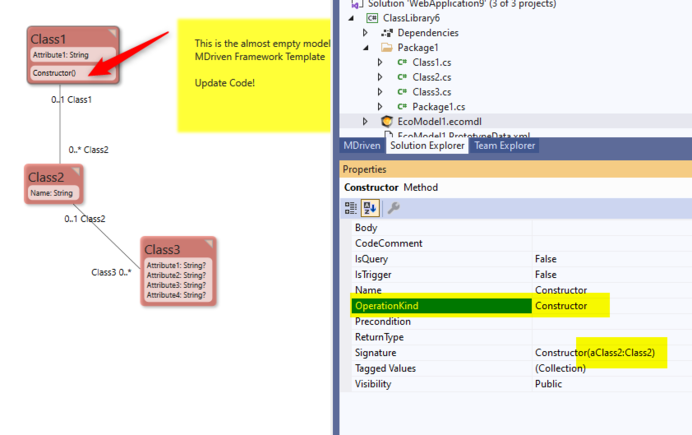There are different kinds of operation methods:
To create a constructor, first, add a normal method, then change the operationKind to constructor.
In generated code, you will get this:
public partial class Class1
{
[UmlElement(Id = "c8111515-b7a5-4b9b-87f9-4a19261c8bd8")]
public Class1(Class2 aClass2)
{
}
}
Normally, when doing a constructor for "live" objects, you will want to send in IEcoServiceProvider and call the main constructor we provide like this:
public Class1(IEcoServiceProvider serviceProvider, Class2 aClass2): this(serviceProvider)
{
}
When not using code - only action language
When not using code - only action language (EAL) we do not allow for constructors being implemented in the body property of the method. You can however set OperationKind:Static and go like this:
SimulatedConstructor(input1:String; input2:String):Class1
And in the body:
let ret=Class1.Create in( ret.Attribute1:=input1; ret.Attribute2:=input2; ret )
All in all this will serve the same effect as a constructor - when you need to set provided parameters or create structures in one go call it with:
Class1.SimulatedConstructor('a','b')
]


